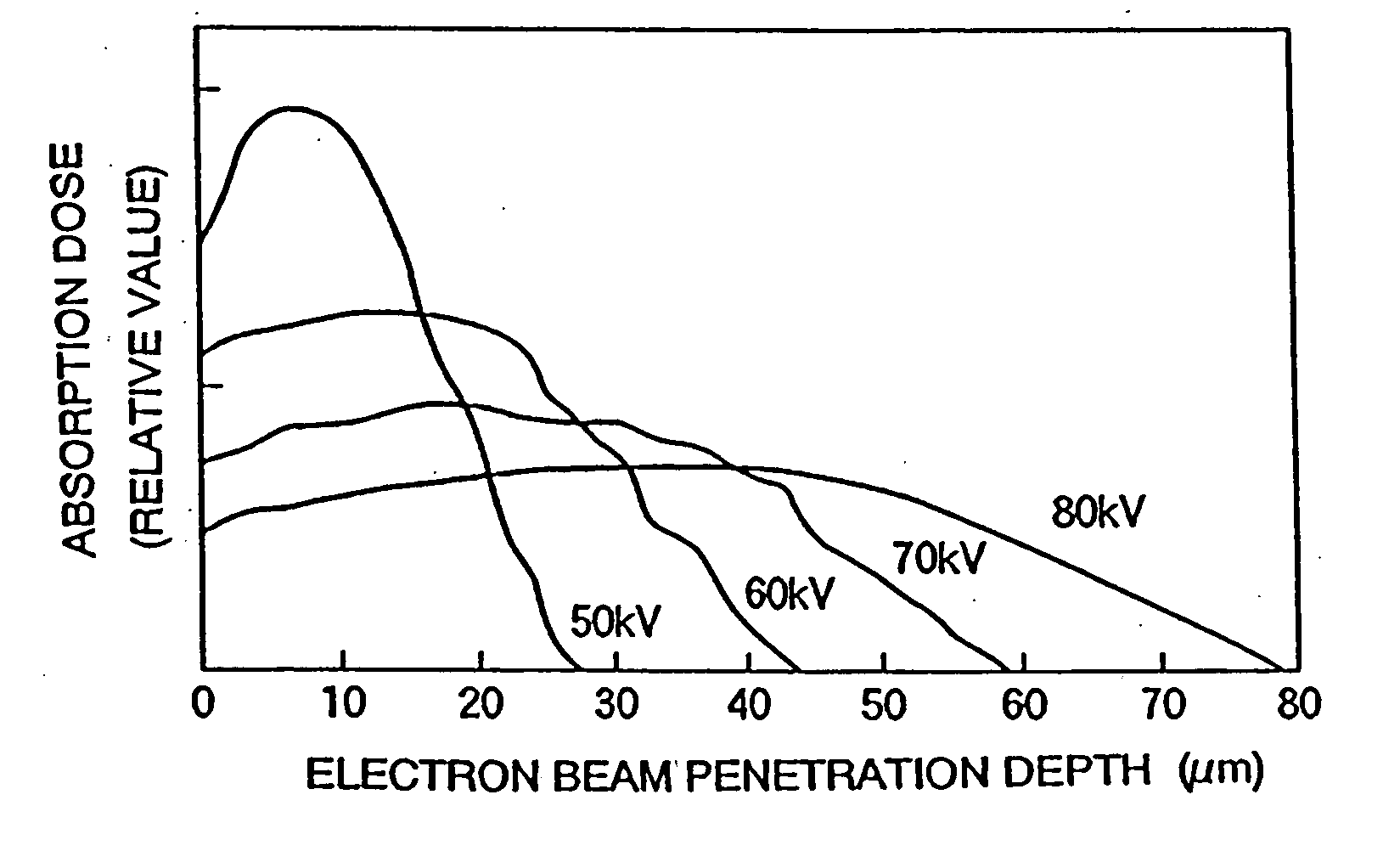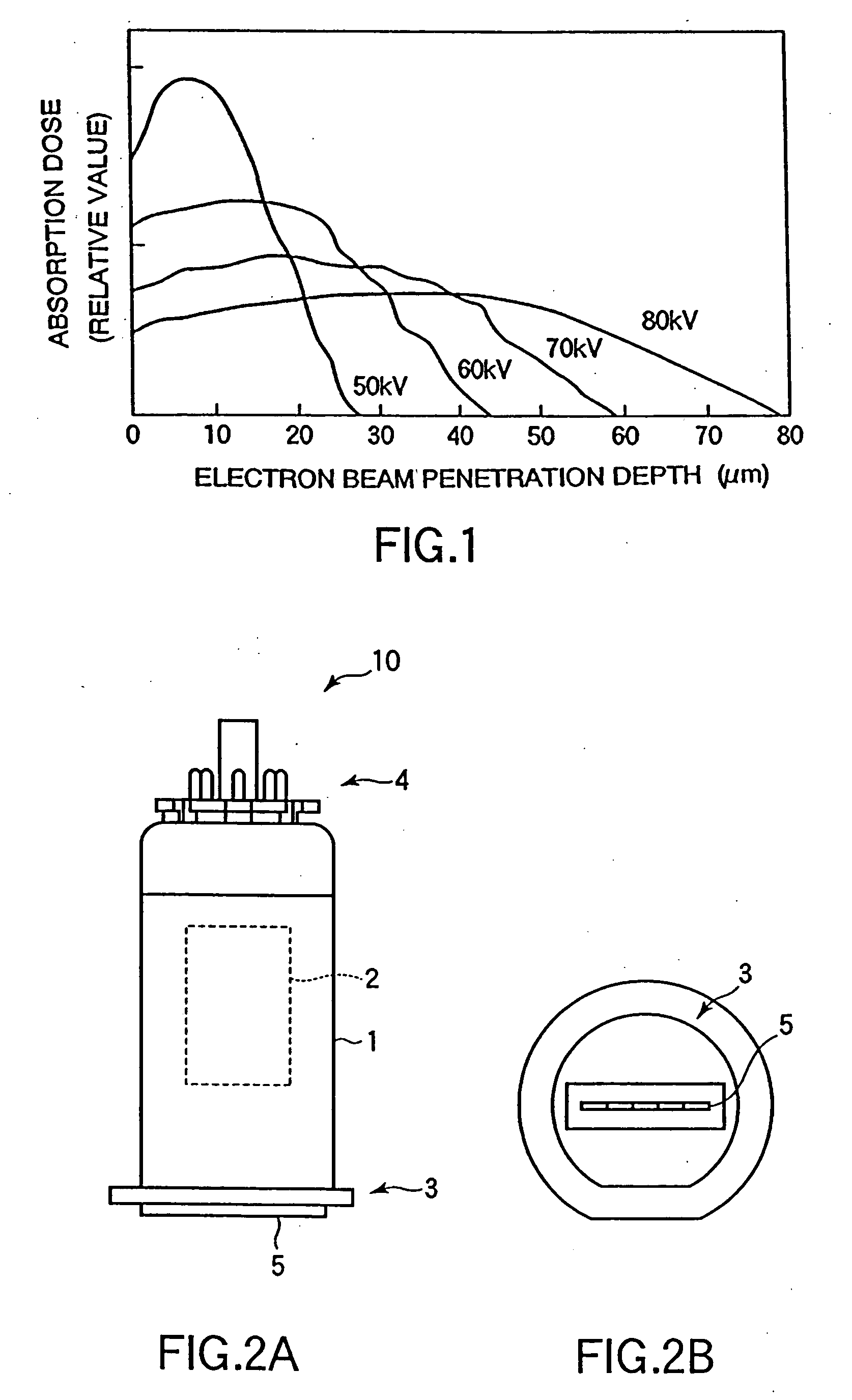Shrink film, process for producing the same, printing ink, print produced therewith and process for producing print
a technology of shrink film and film plate, which is applied in the field of shrink film, can solve the problems of loss of product value, affecting the quality of product, and affecting the quality of product, and achieves the effects of short delivery date, good productivity, and low cos
- Summary
- Abstract
- Description
- Claims
- Application Information
AI Technical Summary
Benefits of technology
Problems solved by technology
Method used
Image
Examples
example 1
[0102] An offset ink of the electron beam curable type was prepared by mixing 45 parts of a varnish, 15 parts of a cyan pigment (LIONOL BLUE FG7330 from Toyo Ink Mfg. Co., Ltd.), 25 parts of dipentaerythritol hexaacrylate, and 15 parts of pentaerythritol tetraacrylate, and dispersing the mixture by a three-roll mill. The varnish was made of 74.9% dipentaerythritol hexaacrylate, 0.1% hidroquinone, and 25% DT150 (diallyl phthalate resin from Tohto Kasei Co., Ltd.). The ink was applied onto a heat shrinkable polyester film (40 μm of HISHI PET LX-10-Y from Mitsubishi Plastics, Ltd.) by offset printing, and was then cured within a nitrogen gas atmosphere, using an electron beam irradiation apparatus of the vacuum tube type from UIT Inc., (which will be referred to as a Min-EB), at an acceleration voltage of 50 kV and an irradiation dose of 35 kGy (kilo Gray).
[0103] The ink showed a sufficient curing level, and the film was not crinkled or warped by the electron beam irradiation. The pro...
example 2
[0104] A varnish for coating was prepared by mixing and stirring 25 parts of three-functional urethane acrylate, 25 parts of tripropylene glycol diacrylate, 35 parts of trimethylolpropane (propylene oxide) acrylate, and 15 parts of 2-acryloyloxypropyl hydrogen phthalate, using a disper. The varnish for coating was applied to have a layer thickness of about 5 μm onto a heat shrinkable polystyrene film (60 μm of BONSET EPS62 from C.I. Kasei Co., Ltd.) by flexo printing, using an anilox roll with a line number of 300 L, and was then cured within a nitrogen gas atmosphere, using the Min-EB apparatus, at an acceleration voltage of 50 kV and an irradiation dose of 30 kGy.
[0105] The varnish showed a sufficient curing level, and the film was not crinkled or warped by the electron beam irradiation. The processed film showed good heat shrinkage and no problem in design quality when it was shrunk.
example 3
[0106] A heat shrinkable polopropylene film (30 μm of PYLEN film-OT P6183 from Toyobo Co., Ltd.) was irradiated, using the Min-EB apparatus, at an acceleration voltage of 50 kV and an irradiation dose of 50 kGy. Then, an ink was applied onto the film by offset printing and cured as in the example 1.
[0107] The ink showed a sufficient curing level, and the film was not crinkled or warped by the electron beam irradiation. The processed film showed good heat shrinkage and no problem in design quality when it was shrunk. Furthermore, the ink and film showed good adhesiveness therebetween.
PUM
| Property | Measurement | Unit |
|---|---|---|
| Length | aaaaa | aaaaa |
| Percent by mass | aaaaa | aaaaa |
| Percent by mass | aaaaa | aaaaa |
Abstract
Description
Claims
Application Information
 Login to View More
Login to View More - R&D
- Intellectual Property
- Life Sciences
- Materials
- Tech Scout
- Unparalleled Data Quality
- Higher Quality Content
- 60% Fewer Hallucinations
Browse by: Latest US Patents, China's latest patents, Technical Efficacy Thesaurus, Application Domain, Technology Topic, Popular Technical Reports.
© 2025 PatSnap. All rights reserved.Legal|Privacy policy|Modern Slavery Act Transparency Statement|Sitemap|About US| Contact US: help@patsnap.com


